This page contains affiliate links. We may earn money or products from the companies mentioned in this post through our independently chosen links, which earn us a commission. Learn More
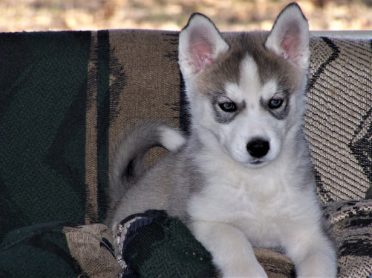 The Siberian Husky is a dog breed that originated from Siberia and later brought to Nome Alaska for sled-dog racing. It’s a medium-sized dog at about 20 to 24 inches tall, weighing between 35 to 60 pounds. The average lifespan of the Siberian Husky is around 12 to 15 years.
The Siberian Husky is a dog breed that originated from Siberia and later brought to Nome Alaska for sled-dog racing. It’s a medium-sized dog at about 20 to 24 inches tall, weighing between 35 to 60 pounds. The average lifespan of the Siberian Husky is around 12 to 15 years.
Keep reading to find out all about what it means to own a Siberian Husky.
Siberian Husky Photos
Contents & Quick Navigation
1. She’s a sociable creature
 The AKC calls Siberian Huskies ´born pack dogs,´ meaning that they were bred to perform as part of a pack; thus, sociability is in their blood.
The AKC calls Siberian Huskies ´born pack dogs,´ meaning that they were bred to perform as part of a pack; thus, sociability is in their blood.
They are, first and foremost, very loving and gentle dogs, who give a lot of affection and love to receive it.
They’re good with children (though, of course, they should be supervised at all times) and friendly towards strangers. For this reason, I don’t recommend them if you want a guard dog, as they are likely to greet an intruder with a wag of the tail rather than a menacing bark.
Siberian Huskies shouldn’t be left alone for too long (no more than 3 or 4 hours), and they like to live with other dogs.
2. She needs tons of exercise
Like the Alaskan Husky and the Alaskan Malamute, the Siberian Husky was bred to haul cargo, meaning they are used to doing a lot of activity and are, therefore, very high-energy dogs.
As adults, they need at least 1 hour of vigorous exercise a day. They make an excellent match for someone who is sporty and likes doing activities such as hiking, jogging or running.
3. She likes having a job

As I advised with the Alaskan Husky, it is worth investing in a doggie backpack to fulfill her need to have a job. In these packs, you can store bottles of water to keep you both hydrated on a hike. Carrying this weight will satisfy her instinct to exercise with a load, plus she will burn off even more energy!
4. She needs a lot of maintenance!
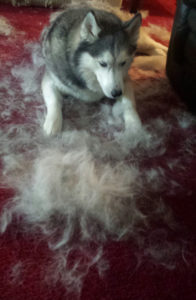 Ask any Siberian Husky owner, and they’ll tell you all about the amount these dogs can shed.
Ask any Siberian Husky owner, and they’ll tell you all about the amount these dogs can shed.
Apart from everyday shedding (which is a pretty high amount), these dogs ‘blow out’ their entire undercoat twice a year – in the spring and the fall. That means – yep! – those hairs will be flying around, getting on the carpet, and testing your patience levels.
During these times, you should probably just leave the vacuum cleaner where you can see it at all times!
To avoid excessive shedding, groom your Siberian Husky daily from head to tail. Use a heavy-duty comb that can reach deep into the undercoat and pull out loose hair.
During shedding season, you should be prepared to do this for up to 30 minutes, and don’t be surprised if you pull out piles of hair. Sometimes it might even seem you could make another Husky out of the amount that comes out!
5. She has a hard time in the heat
Like their Alaskan Husky and Alaskan Malamute cousins, these dogs do not do well in the heat. If you live somewhere where the temperature reaches 80 degrees (26ºC) or over, don’t get a Siberian Husky.
They should not be exercised in temperatures above 68 degrees (20ºC). In the summer months, it is better to take them out in the morning and the evening when the temperature is lower.
6. She’s a talented escape artist
Like the Alaskan Husky, she can run fast (at up to 28 mph, or 40 kph), and she has epic levels of endurance. Until you trust her recall, I advise you keep her on a leash, or off-leash in an enclosed area, as, if she gets away from you, I can tell you now, you won’t catch her!
If you exercise your Alaskan Husky enough and train her well, her running away from you on a walk or jumping over the garden fence is unlikely to occur. This is simply a warning that, if you don’t stimulate her need for exercise, you may have a dog on the loose.
7. She needs a strong pack leader
Siberian Huskies are known to have a stubborn, independent streak, which can make them a bit tricky to train, especially if you are a first time owner.
With a Siberian Husky, you need to lay down the rules from the start, and firmly. You must establish yourself as pack leader, and be authoritative and consistent. As she has a strong pack instinct, if she does not see you as the leader, your Husky may try to establish herself at the top of the pack, which can lead to undesirable behaviors such as aggression.
If you have children, it is especially important to teach your Siberian that she is below you and your family in the hierarchy. She must respect your children and never be allowed to jump up, nip them with her mouth or growl at them. In the same way, you must teach your children to follow some rules: never pull the dog’s hair, tail or ears, and don’t chase her.
Further reading
Siberian Husky Health Concerns
Most Siberian Huskies are healthy dogs, but there are a few health concerns you should be aware of. These include:
- Hip dysplasia
- Eye problems: cataracts, corneal dystrophy, progressive renal atrophy
FAQs (Frequently Asked Questions)
🐺 Is Husky a wolf?
With one look, you may think it’s a wolf on the loose! But they’re like any other dog breed. Some can be crossbred with actual wolves to make a hybrid. If you want a canine of your own that have wolf-like features, here’s how you can become a part of its pack.
🥩 What do Husky eat?
Like most dogs, Huskies can be fed with dry kibbles or wet food, but a lot of pawrents feed their wolf-like pooch with a raw diet. They’re more natural or organic, easier to store and last longer. But refueling your Husky means he or she has a lot of energy again! We provided ways on how to keep your Siberian Husky busy and healthy after a good meal.
☠️ Are Huskies dangerous?
Being dangerous is not an inherent trait with any breed, and we can say the same for this dog. In fact, if you think this furball is scary to be around, then this section we have about the Husky will probably surprise you.
🤗 How do Huskies show affection?
One of the ways that a Husky will show its love for you is by gently holding your hand in its mouth. It’s like a trust exercise that he or she will not bite you. With that said, love and respect go hand in hand. This part of our article will tell you how you can show your affection in return while maintaining that pet-owner relationship.
🏷️ How much is a Husky?
The average price of a Siberian Husky puppy is about $725, but you can expect the cost to be anywhere between $600 to $1,300. If you would prefer a pooch that’s top of the line, it can be as expensive as $6,000. The money and effort you’ll spend won’t stop there. Once you have your pup home, consider the needs of your Husky that goes beyond basic care. It’s best to prepare your home and yourself to cater to this fluff.
Conclusion
So, we know the Siberian Husky is a truly beautiful breed, who:
- Is gentle, affectionate and friendly
- Needs lots of exercise
- Likes to have a job
- Is known to be an escape artist if bored or underexercised
- Sheds a lot and needs daily grooming
- Does better in cooler climates
- Needs a strong leader who is preferably an experienced dog owner
Have you got what it takes to own a Siberian Husky? Comment below!
Related Posts:
What is the Best Dog Food for Huskies
6 Questions About The White Husky Answered!
Top 10 Questions about the Miniature Husky


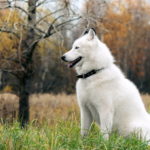
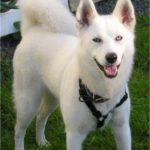

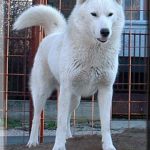
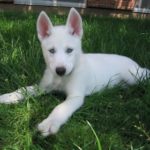
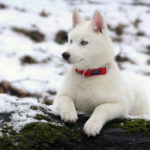

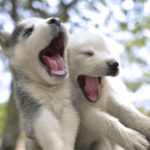
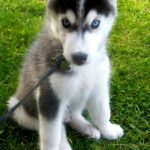

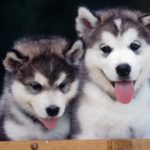
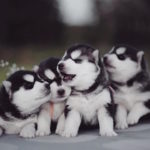
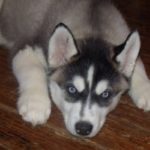
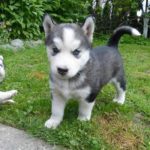
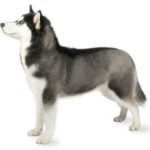
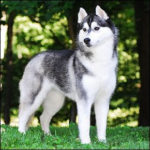

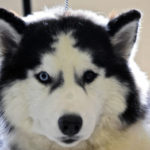
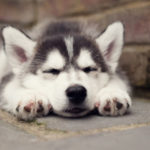
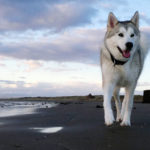
5 replies on “7 Things You Need To Know About The Siberian Husky”
I have a three month old male Husky. Very affecinat, smart and an absolute handful! Have managed to potty train as far as pooping goes but still working on pee lee. Most especially when he is excited. Any suggestions?
We are getting a siber husky soon, pick her up next week. We have a whire shepard 15 years old, great dog. I am concerned about the hiarchy cause this husky is 3 years old. Any suggestions? I plan to run her through the woods behind our house every day for excersize.
I also have a cat..
I have been odedience training breeds, german shepherds, labs for 50 years. I jog with the dog I have and give the dog up to 6 hours excersize evey day which includes obedience training, walking and jogging,and after 2-3 hours on first session we go to the pub because there aren’t many public toilets. I am happy to say I get my siberian husky on friday and am looking forward to the challenge.
Kristina: take him out every few hours & when he pees outside praise him & give him a treat. Only accident mine hade I mistook him telling me he had to go) for excitement for a visitor. (soon b4 our walk)
…then gradually increase the time. Mine could usually easily go 12 hours, if not he’d tell me.
*******
In the pics at least one of them is a Samoyed not a husky.
1. Friendly but often aloof. Every husky I’ve me was friendlier than my Kronos. He really liked being near me but not that much attention. If I was petting him for more than a minute he’d often get up & walk away.
2. TONS of exercise. I was prepared for a high energy dog but not a 5 mile run w/ my bike & had to weigh him down w/ water bottles so I could keep up, and at least twice a day.
3. My Kronos was very dominant so I had to be careful when introducing new dogs he was ok w/ all unless they got aggressive. He was fine w/ other dominant dogs but only ever bowed down to one, an Alaskan Malamute more than twice his weight @ 153 lbs.
Kronos’ job was running along my bike & he appointed himself head of security at the dog park. He’d let dogs know if they were too rough, less tolerant w/ rough play against puppies, more tolerant of puppies, disabled & senior dogs against him. Kronos broke up 5 fights b4 us humans could get there.
4. Some huskies don’t like to be groomed or bathed. Kronos hated being combed so I’d do it 5 min at a time sometimes several times a day. I made a couple of combs from human ones that worked better than any from the pet store. I’d get 2 w/ sturdy teeth. One one cut out every other tooth & the other 2/3’s of them (2 out 1 in, 2 out, 1 in, etc). I’d comb w/ the 2/3’s w/ the grain until wasn’t really pulling out more h as or the repeat w/ the 1/2 toothed. When that wasn’t pulling out hair either I’d repeat the first 2 steps against the grain.
5. I’d walk/run him in the morning or after sunset & do my best to keep him cool. I’d keep a fan on on the wood floor for him.
6. Escaped 23 times & got him back w/o help less than 1/2. Could jump a 4’ fence lice it was nothing & find holes in peoples fences.
7. Like many Kronos was stubborn so if I asked him to do something 2x’s & if he didn’t do it, I’d make him (ie dangerous) or decide it wasn’t important (ie sit). Also I’d never ask him to do something unless I could make him or I thought he’d do it. He liked to play rough w/ other dogs & me & I was fine w/ that, but one time he did a play bite on me a bit too hard so I immediately tackled him held him on the ground on his back until he didn’t move for ~2 sec the I let him up. Never had to get similarly rough w/ him ever again.
8. Illnesses: when I got Kronos he had a cataract so blind in his left eye & epilepsy, needing more & stronger medicine until he was on max dose of 4. These decreased his energy level & the last year he had only one minute warning to be let out & wore a diaper inside that only stopped dripping.
He died fairly young at 7.5 yrs bk even w/ the meds & acupuncture he had several seizures every & 1-2 grand mals a wk.